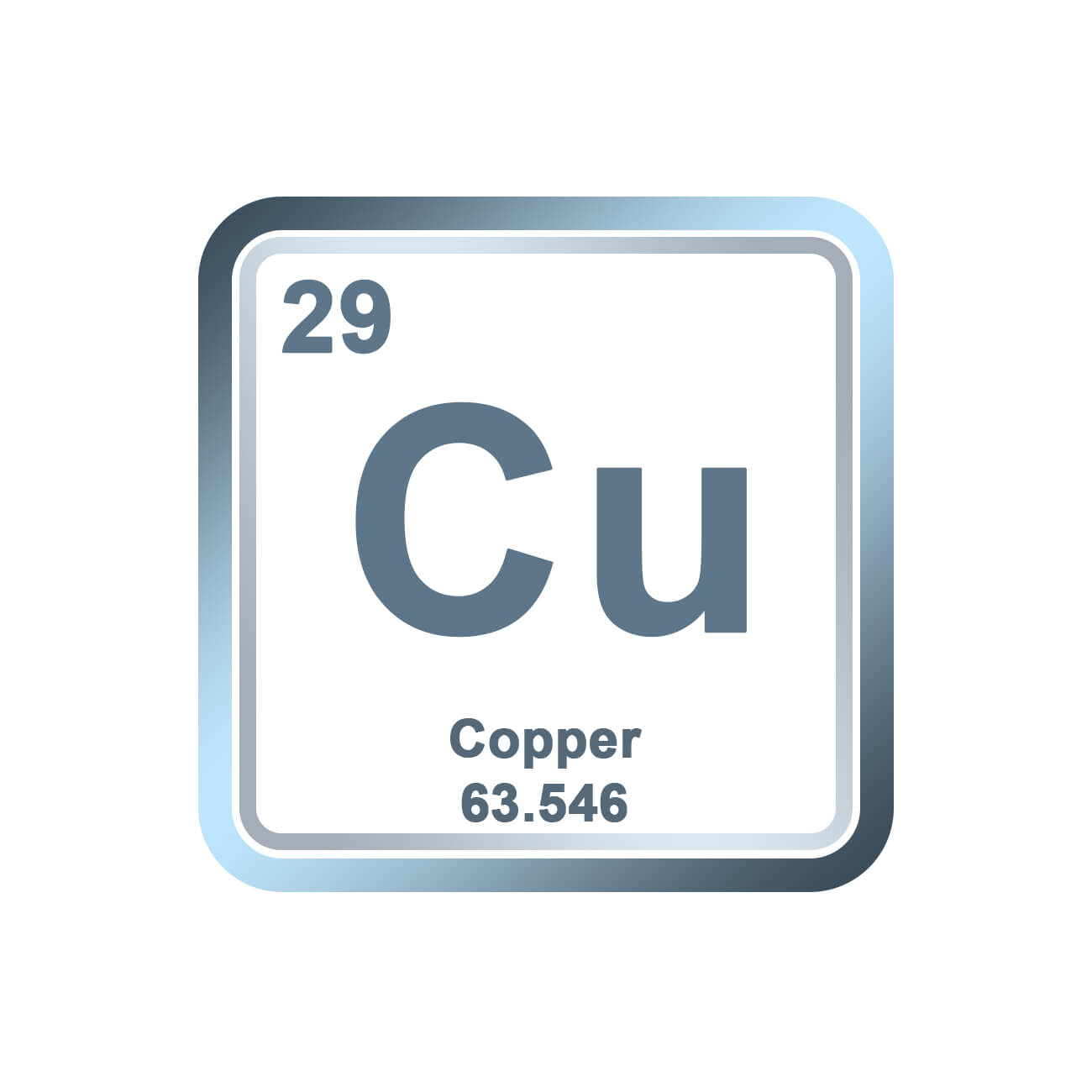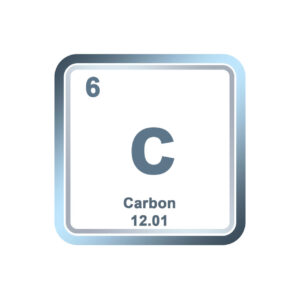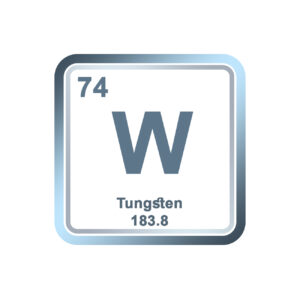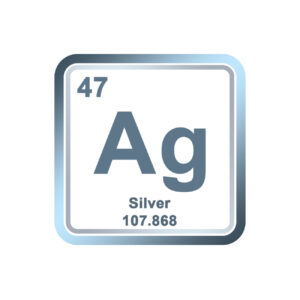Copper
Overview of Copper in Essential Manufacturing
Per the United States Geological Survey National Mineral Information Center, in 2020, U.S. mine production of recoverable copper decreased by 5% to an estimated 1.2 million tons and was valued at an estimated $7.5 billion, 3% less than $7.75 billion in 2019. Arizona was the leading copper-producing State and accounted for an estimated 74% of domestic output, followed by, in descending order, Utah, New Mexico, Nevada, Montana, Michigan, and Missouri. Copper was recovered or processed at 25 mines (18 of which accounted for 99% of mine production), 3 smelters, 3 electrolytic refineries, and 14 electrowinning facilities. Refined copper and scrap were used at about 30 brass mills, 15 rod mills, and 500 foundries and miscellaneous consumers. Copper and copper alloy products were used in building construction, 43%; electrical and electronic products, 21%; transportation equipment, 19%; consumer and general products, 10%; and industrial machinery and equipment, 7%.
Old (post-consumer) scrap, converted to refined metal and alloys, provided an estimated 150,000 tons of copper. Purchased new (manufacturing) scrap, derived from fabricating operations, yielded an estimated 720,000 tons. Of the total copper recovered from scrap (including non-copper-base scrap), brass and wire-rod mills accounted for about 80%; smelters, refiners, and ingot makers, 15%; and miscellaneous chemical plants, foundries, and manufacturers, 5%. Copper recovered from scrap contributed about 38% of the U.S. copper supply.
Product Description
USGS Copper Report 2021
An important feature of the copper market is the extent to which recycling plays a key role, with some 35 percent of global supply coming from recycling. However, even if 100 percent of copper were to be recycled, this would only meet about 25 percent of global demand.
While unlike other critical minerals in that adequate supply is not a significant issue for copper, the location and accessibility of the resource create questions. The greatest difficulty is in tapping these reserves in a way that is profitable, sustainable, and responsible. U.S. production of copper has declined of late, with an estimated 5 percent decrease over the past few years. In this light, it is more critical than ever to create domestic supplies that not only meet demand, but also do so in a way that is environmentally friendly and produces the least amount of impact on the ecosystem.
Copper in Green Energy
Copper is another key enabling resource since renewable energy and increasing electrification are likely to require copper than fossil-fuels. Copper is also a critical component of energy-efficiency improvements.
As the world continues to transition to new energy technologies, copper will be an increasingly needed resource. These systems require more copper than traditional energy sources. Because copper is a highly efficient conductor of electricity and heat, it is used in renewable energy systems to generate power from solar, hydro, thermal and wind energy across the world. Copper helps reduce CO2 emissions and lowers the amount energy needed to produce electricity. In many renewable energy systems, there is 12-times more copper being used than in traditional systems to ensure efficiency.
Copper’s use in the renewable energy market will continue to expand as these technologies become more widely used. The market has already seen a trend in the rise of companies and commercial buildings installing green energy systems. These sectors value sustainability and are looking to lower their energy costs by utilizing them.
Renewable energy sources provide nearly one-quarter of the world’s power, and copper plays an important role in making it as efficient as possible with minimal impact on the environment. With this being said. renewable energy systems consume approximately five times more copper than conventional power generation systems, making the metal essential for any successful transition to fossil fuel alternatives. Solar power systems contain approximately 5.5 tons per MW of copper, while grid energy storage installations rely on between 3 tons and 4 tons per MW. A single wind farm can contain between 4 million and 15 million pounds of copper. The use of copper wiring, tubing, busbar, cable, bushings, bearings, and myriad electrical and mechanical parts keeps these systems operating longer and at higher efficiencies.
Further, roughly three times more copper is used for electric vehicles in comparison to conventional gas-powered vehicles. This alone could create a new major source of copper demand. If all 80 million new car sales were EVs today, that it would require 6 million tons of additional copper. Looking forward, by 2035 Bloomberg projects a 43% penetration of EVs in the light-duty vehicle market, which will be roughly equal to 110 million cars. Using the above ratios, that’s about 3.6 million tons of extra copper demand – equal to about 15% of the current market.
Despite more copper being needed for green applications, there are some questions around where this new metal may come from. Copper projects are notoriously large-scale in size, and the pipeline of new projects is the lowest in a century. As a result, analysts are expecting that the long-anticipated supply crunch might come sooner than expected. However, copper is one of the best renewable resources. It is one of the few materials that can be recycled 100 percent over and over again without a loss in performance. Developed and continual domestic supplies of copper from existing industrial products are key to ensuring the valuable asset is available to grow our use in a sustainable way.
Copper in Medical
For centuries, copper has been known to prevent attachment by living organisms. These properties were noticed by the health care industry, which took steps to incorporate the biostatic properties of copper into hospitals and other health care facilities.
According to the Environmental Protection Agency (EPA), copper can kill 99.9 percent of bacteria that lands on its surface within two hours. In comparison, additional chemicals and contaminants can leach onto plastics and make them harmful to both humans and wildlife. The process involves the release of copper ions when microbes, transferred by touching, sneezing or vomiting, land on the copper surface. The ions prevent cell respiration, punch holes in the bacterial cell membrane or disrupt the viral coat, and destroy the DNA and RNA inside.
This latter property is important as it means that no mutation can occur; preventing the microbe from developing resistance to copper. Global concern is growing over antimicrobial resistance and the risk of death that it presents from common infections in even minor operations. Therefore, it is fortunate that copper alloys kill superbugs.
Around the world, medical care facilities have implemented copper in their everyday operations. In order to take advantage of its special properties, copper is used in a number of health applications such as bed railings, door handles, IV poles, faucets, and other touch-oriented fixtures. By replacing the current surfaces in hospitals with antimicrobial copper surfaces, it’s reported that the number of healthcare-associated infections could be reduced by 58 percent, according to the Infection Control and Hospital Epidemiology.
With these antimicrobial features in mind, it’s no surprise that copper has become increasingly popular as an alternative to plastic in medical applications. Turning to traditional materials, like copper, offers designers some surprising benefits compared to the materials that are currently used in medical applications. By helping healthcare professionals to significantly reduce the risk of spreading infections across a hospital, copper can help medical staff improve the overall quality of care for their patients.






Reviews
There are no reviews yet.